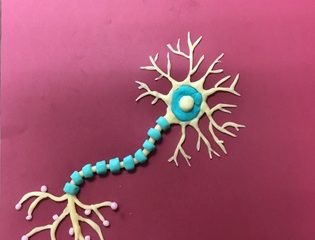We are remarkably good at making quick judgments of people. In an analysis of choices made during speed dating, the authors comment, “HurryDate participants are given three minutes in which to make their judgments, but they mostly could be made in three seconds.” Not too surprisingly, these quick choices are made on the basis of physical appearance. For men in the HurryDate study, choices were dominated by a woman’s thinness. Women preferred men who were physically attractive, young, medium build, and of a similar race to themselves.
Nalini Ambady and Nicholas Rule have extended our understanding of these quick judgments to sexual orientation. Men and women viewed 90 faces of homosexual and heterosexual men for periods of time varying from 33 msec to 10 seconds. When given at least 100 msec (1/10th of a second) or more, participants judged the men’s sexual orientation accurately at least 70% of the time. Increasing exposure beyond 100 msec did not improve accuracy. We are either correct very quickly or we continue to be incorrect.
We have to wonder which features are most helpful in making this distinction. We know that women do an excellent job of perceiving which men will score high or low on an infant interest questionnaire (perhaps predicting a man’s interest in being a good father), and that this distinction is based on the “masculinity” of the face (strong jaw, heavy brows, etc.)[2]. Hopefully, researchers will follow up on Ambady and Rule to figure out what exactly we see in 100 msec.
1. Rule, N. O., & Ambady, N. (in press). Brief exposures: Male sexual orientation is accurately perceived at 50 ms. Journal of Experimental Social Psychology.
2. Penton-Voak, I.S., Cahill, S., Pound, N., Kempe, V., Schaeffler, S., & Schaeffler, F. (2007. Male facial attractiveness, perceived personality, and child-directed speech. Evolution and Human Behavior, 28(4), 253-259.



6 Comments
bldrysdale · January 21, 2008 at 9:19 pm
While I don’t feel that one can tell in seconds what a person’s sexual orientation is, this is a very interesting study done by Ambady and Rule. It is additionally interesting how the media uses the idea of being able to tell one’s sexual orientation by spending a brief amount of time with a person. One television show, Gay Straight or Taken, appears to go off this view and trys to have people guess if another person is Gay Straight or Taken. Though I don’t think the show should ever be a basis of proof, it does view figuring out another person’s sexual orientation as needing longer than 100 msec.
esantoyo · January 23, 2008 at 9:16 am
I think the data only goes as far as to show that the criteria we use to visually judge homosexuality, whatever it may be, is clearly planted in the amygdala et al, the “low-road,” to borrow Goleman’s terminology. The remaining 30% could only be judged by behavior. Though I would say that the percentage right could be skewed because the sexuality is self-reported, and I could have guessed someone is gay, but if he’s not out of the closet, I still would get it wrong. It’s difficult to even say who’s “truly” gay or not. And what about bisexuals? What about straight men who have had sex with men? Are they gay? All these identity questions inherent in the findings… The study kinda falls into the trap of not knowing what question it has an answer to.
amandam · March 6, 2008 at 12:02 am
In regards to physical features, I wouldn’t say exactly that they say a lot about a person, but to another person, who is viewing, they can and will most likely assume something about the person based on the physical features alone. What is thought may or may not be true, but when certain features stand out it may be easier to assume. So in response to quick judgements of sexual orientation, the first impression you get is probably pulled from distinct features that stand out as either masculine or femine.
ccallag · March 13, 2008 at 1:55 pm
I never knew that it took a person that quickly to make a judgement about sexual orientation. I don’t think this always indicates what the orientation is due to the extra 30%. This portion could be representing a way some one acts or talks. I don’t think every one’s orientation can be identified simply by looks. There have been many cases where people dress/look differently then what people percieve them as- orientation wise.
Situationism in the Blogosphere - January ‘08 « The Situationist · February 3, 2008 at 10:04 pm
[…] From Laura’s Psychology Blog: Quick judgments of sexual orientation . . . […]
Situationism in the Blogosphere - February ‘08 « The Situationist · March 5, 2008 at 12:59 am
[…] […]
Comments are closed.